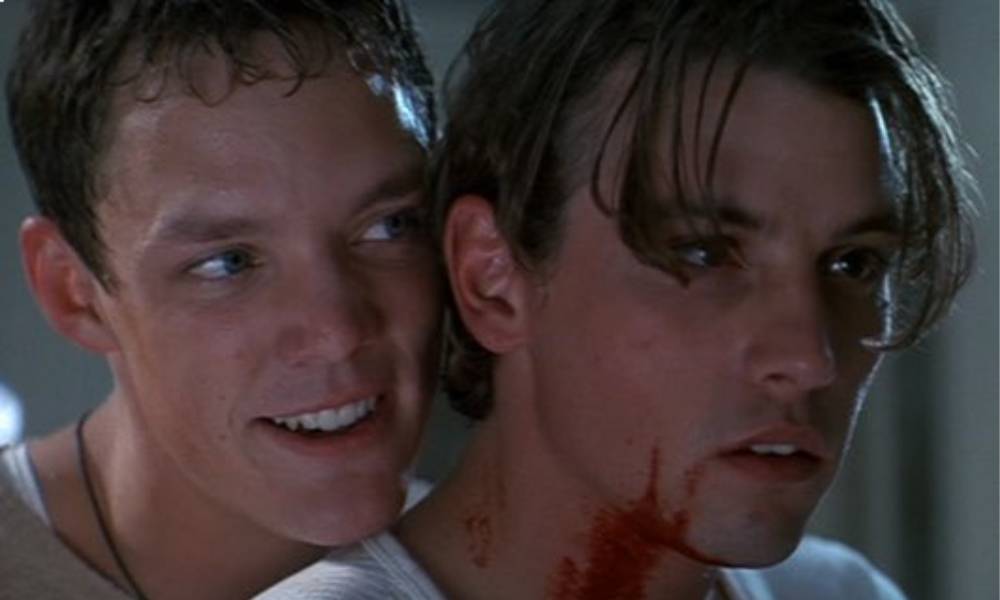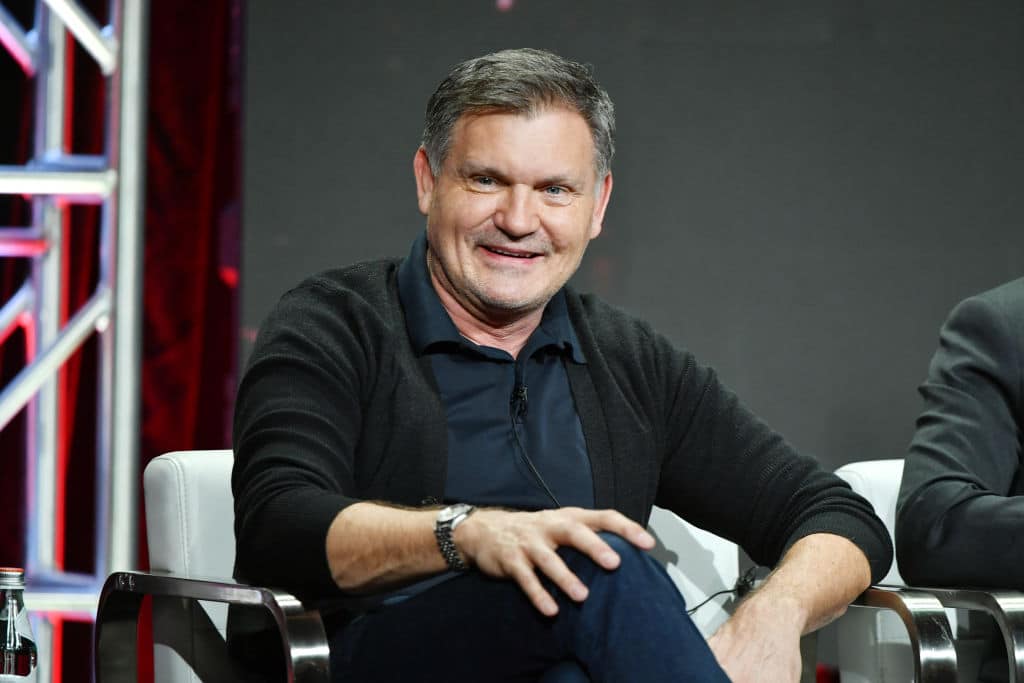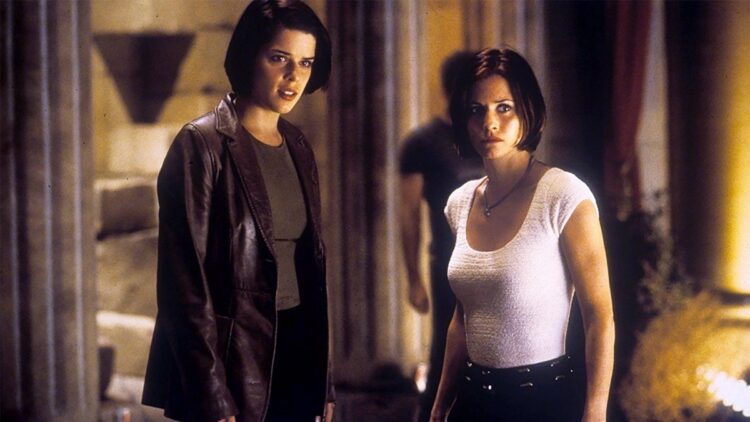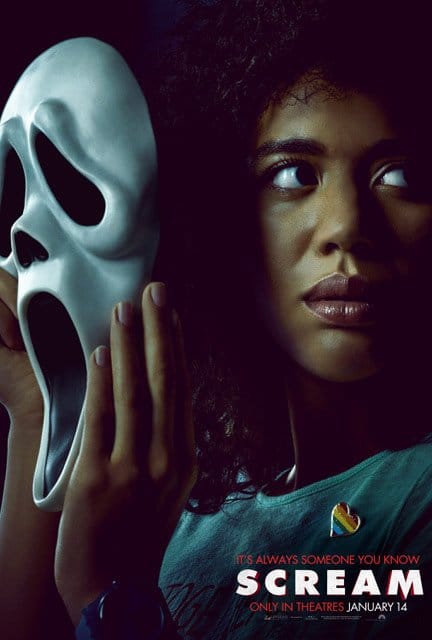6 reasons why Scream is a bone-chilling, blood-curdling queer masterpiece

Scream’s creator has said the slasher film franchise is coded with ‘gay trauma’. (Paramount Pictures)
Do you like scary movies? If you’re queer, the chances are you probably love them – and more than 25 years after it was first released, Scream continues to reign supreme.
The Wes Craven-directed film landed in cinemas in December 1996 and it quickly amassed a massive queer following for its hilarious, scary and camp take on slasher flicks.
There’s a lot more going on in Scream too – it’s got queercoded characters, homoeroticism, Gale Weathers (she’s a gay icon – we’re calling it), and plenty more for LGBT+ audiences to latch onto.
Ahead of the next instalment in the Scream franchise, we take a look back at the film that turned an entire generation of queer people into horror film fanatics.
1. Its killers were literally based on real-life gay murderers
Queer people who watched the original Scream will have noticed the homoerotic tension between Billy (Skeet Ulrich) and Stu (Matthew Lillard). Yes, we know, it wasn’t exactly a groundbreaking moment for LGBT+ representation on screen, but queer film fans are well trained in spotting subtext – and the subtext was real between these two.
It turns out that we didn’t completely imagine it, either. Screenwriter Kevin Williamson, who wrote Scream, has confirmed that they were loosely based on murderers Nathan Freudenthal Leopold Jr and Richard Albert Loeb, both of whom told the press that they were in a homosexual relationship.
“It’s very sort of homoerotic, in the sense that there were these two guys that killed this other person just to see if they could get away with it,” Williamson told PrideSource. “If you Google Leopold and Loeb, you will see. And you’ll read about it and you’ll get, OK, that’s Billy and Stu.”
2. The franchise is ‘coded in gay survival’
The entire Scream franchise is “coded in gay survival”, according to its openly gay writer Kevin Williamson.
Speaking to The Independent in December, Williamson opened up about how he always related to the “final girl” in slasher flicks. The final girl is the female protagonist who manages to survive until the end, somehow managing to outsmart the killer while the rest of her friends are brutally murdered.
“As a gay kid, I related to the final girl and to her struggle because it’s what one has to do to survive as a young gay kid, too,” he said.
“You’re watching this girl survive the night and survive the trauma she’s enduring. Subconsciously, I think the Scream movies are coded in gay survival.”
3. Gale Weathers and Sidney Prescott are gay icons – we don’t make the rules
Gale Weathers (played by Courteney Cox) and Sidney Prescott (Neve Campbell) became instant gay icons when Scream was released in 1996 – and it’s not hard to see why.
The pair are badass, hard-hitting female characters that shake off the “final girl” trope – and queer fans loved every second they were on screen.
It’s also notable that Gale is a career-obsessed, slightly narcissistic figure who doesn’t care what others think of her. She subverted all of the tropes associated with female characters in horror films at the time.
Let’s face it, queer people love getting behind a strong female character – and Gale and Sidney delivered strength in spades.
4. The entire franchise is spectacularly and hilariously camp
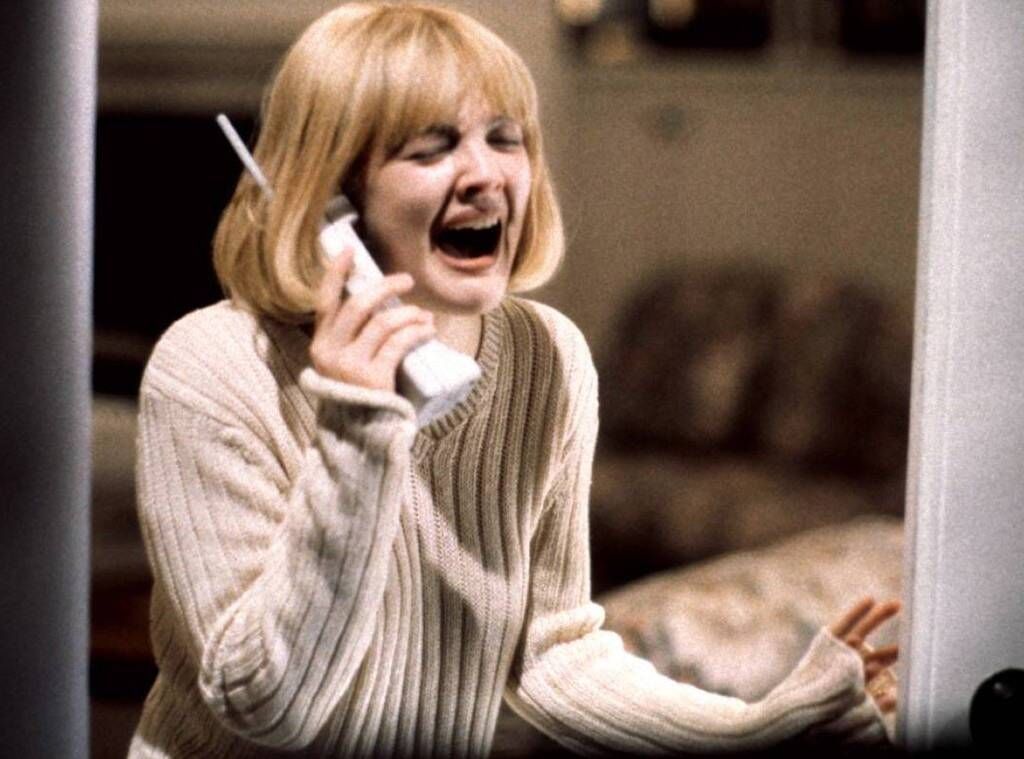
Drew Barrymore in Scream. (Miramax)
Scream was one of those rare films that managed to straddle the line expertly between comedy and horror. The scares are real, but when watching it, there’s always an awareness that it’s a parody designed to deconstruct the genre while also celebrate it.
That heady mix allowed Williamson and the late, great horror director Wes Craven to give us camp in spades. There are so many spectacularly camp moments in the first film that it’s hard to list them all.
Perhaps the campest moments come in the film’s final scenes, where hilarity and horror collide in the best possible way. From Billy quoting Norman Bates (“We all go a little mad sometimes”) to Sidney punching Gale in the face and calling her a “b***h”, Scream proved that it was always dedicated to the art of camp.
5. The Scream franchise just keeps getting better at queer representation
There’s plenty for queer horror fans to fixate on in the first Scream film, but we all know it wasn’t exactly the best example of queer representation on screen. Two queercoded murderers aren’t enough for LGBT+ audiences today, who have (thankfully) come to expect more.
Luckily, the latest scream instalment will introduce audiences to a canonically queer character. Mindy Meeks-Martin, played by Jasmin Savoy-Brown, is sure to capture the hearts of audiences when the film hits cinemas on 14 January. In a promotional image, she can be seen wearing a Pride badge, suggesting that her queerness will be at the centre of her character’s arc.
“What I love about playing Mindy is she’s a queer black woman, just like myself, so I’m really proud of that,” Savoy-Brown told Logo about the role.
6. Scream has spawned countless gay porn parodies, because of course it has
We wish this wasn’t true, but sadly this has become a trope of its own – in 1999, a gay porn studio released its own parody of Scream, and it was the first of many in this surprising sub-genre.
The film, titled Moan, is exactly what you would expect. A masked killer goes around having sex with and subsequently killing various characters, while the writing also pokes fun at tropes in gay porn.
Countless gay porn writers have decided to cash in on the popularity of Ghostface since 1996. Numerous scenes and films have been made, proving unequivocally that the gays really, really love Scream.
